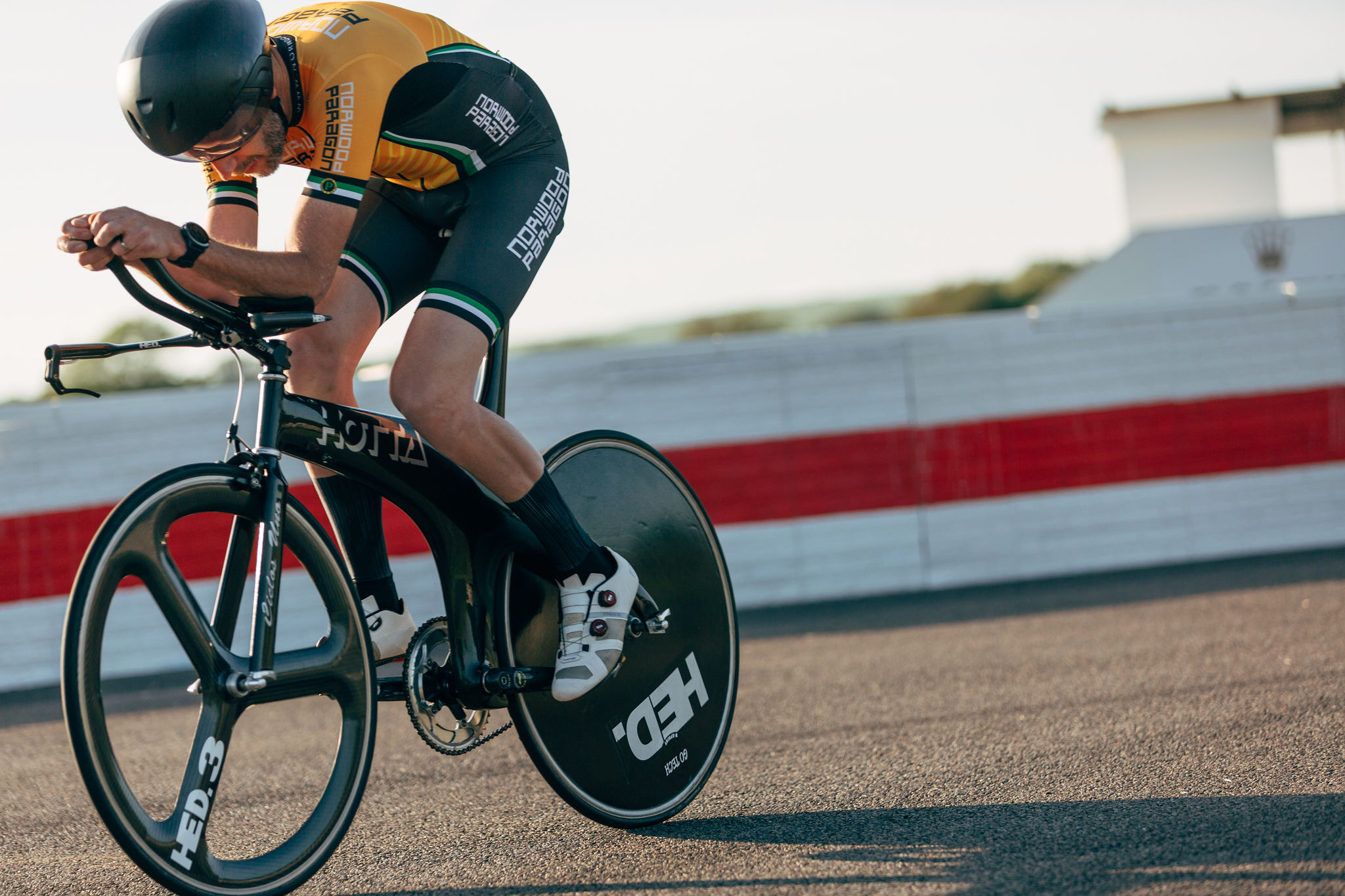Assos Skharab sunglasses review
The Swiss brand's new Italian-made shades are designed to take on the big eyewear brands with their racy looks and lower price
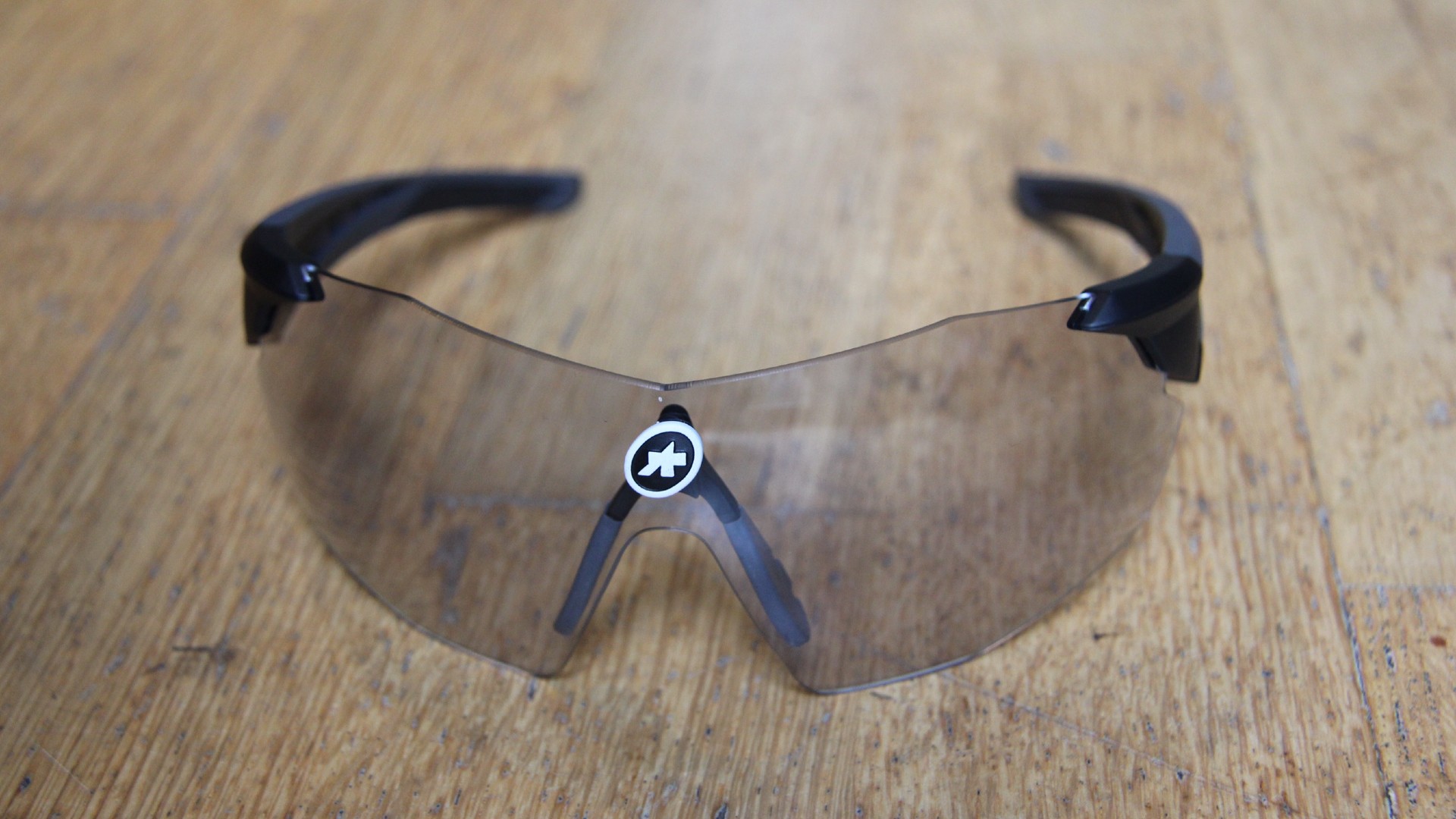
Assos has Oakley, 100% et al in its sights with the new Skharab glasses, which at £215 with the photochromic lens or £200 with standard lens are much more affordable than the flagship £385 Zegho and have a racier look. However, although the lens and frame are high quality and stylish, the shape of the Skharab is not ideally suited for helmets that sit low over the temples.
-
+
Quality photochromic lens
-
+
Comfortable fit
-
+
Uninterrupted vision due to rimless design
-
+
Lightweight
- +
-
-
Fit with certain helmets isn't ideal
-
-
Pointed top of nosepiece can be felt
-
-
Still expensive
You can trust Cycling Weekly.
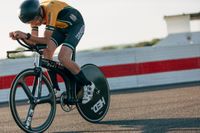
The Assos Skharab glasses are the Swiss brand’s new entry-level sunnies and are, according to Assos, engineered specifically for the demands of racing.
The Assos Zegho sunglasses are just about the most expensive cycling sunglasses out there, with their pricetag of £385. That’s why in this rare case, £200 is entry level.
Assos Skharab sunglasses: construction
The Skharab is clearly the little brother of the Zegho, with the same rimless design and little Assos logo that appears to float in the middle of the lens.
Assos says the Skharab is “bred more for speed, protection and visual clarity in changing terrain and shifting light conditions” and a more angular styling does give it a racier look compared to the bug-eyed Zegho.
The difference in price is partly down to the fact that the Skharab lens is not made by Carl Zeiss, indisputably the Rolls Royce of lens makers.
However, the Skharab lens – there are three options available including this grey photochromic one at £215 – still supplies 100 per cent UV protection, is impact resistant and BPA free.
The latest race content, interviews, features, reviews and expert buying guides, direct to your inbox!
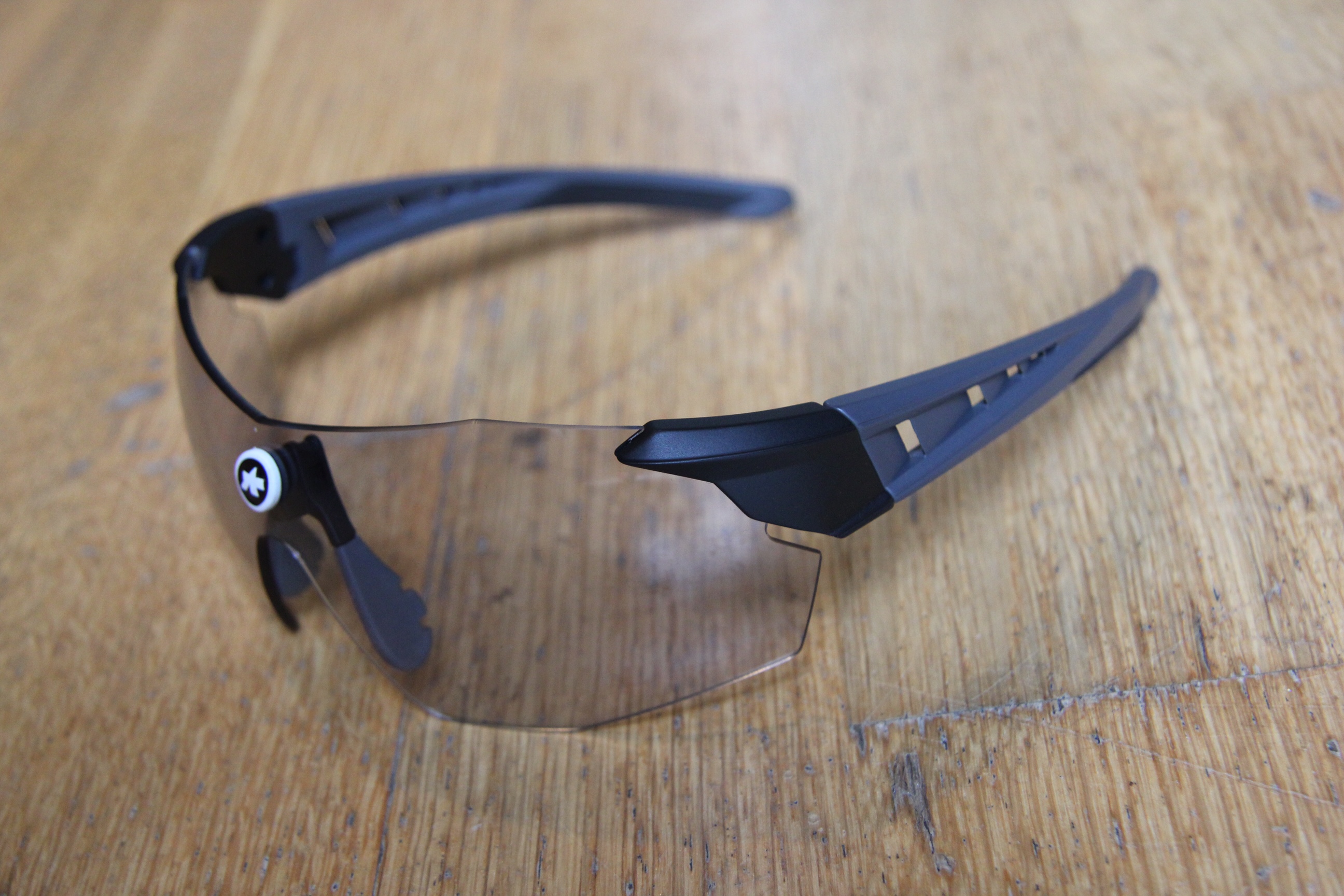
Assos describes the arms, which lock onto the lens, as having “tapered, airflow-channeling temples” which “wrap back above the ear for a smooth, secure fit.”
There’s a series of automotive-looking intakes along the arms. It’s debatable whether whether the arms of glasses really need to be vented, but they do supply an opportunity to hollow out some of the material of the arms to make the Skharabs even lighter.
Unlike many cycling sunglasses these days - the majority even - the lenses are not interchangeable.
The ride
The oversized Zeghos reportedly were - and are, since they’re still a current model - too big for some helmets that sit low on the forehead, and the Skharabs are clearly designed to avoid that particular issue.
I’ve worn them with helmets from Giro, Bontrager, Abus and HJC and there’s plenty of clearance from the top of the lens to the helmet with all of those, since the lens dips down in the middle of the brow. However, where the arms meet the lens seems a little higher than with other glasses, and if worn with a helmet that sits low over the temples - such as the Giro Helios Spherical, the Assos Skharab glasses can get pushed down the nose a little.
Helmets without as much temple coverage - such as the popular Abus Gamechanger and the HJC Furion, work fine with the Skharabs, but the tops of the arms are still very close to the underside of the temple protection area, while leaving a gap in the middle of the brow.
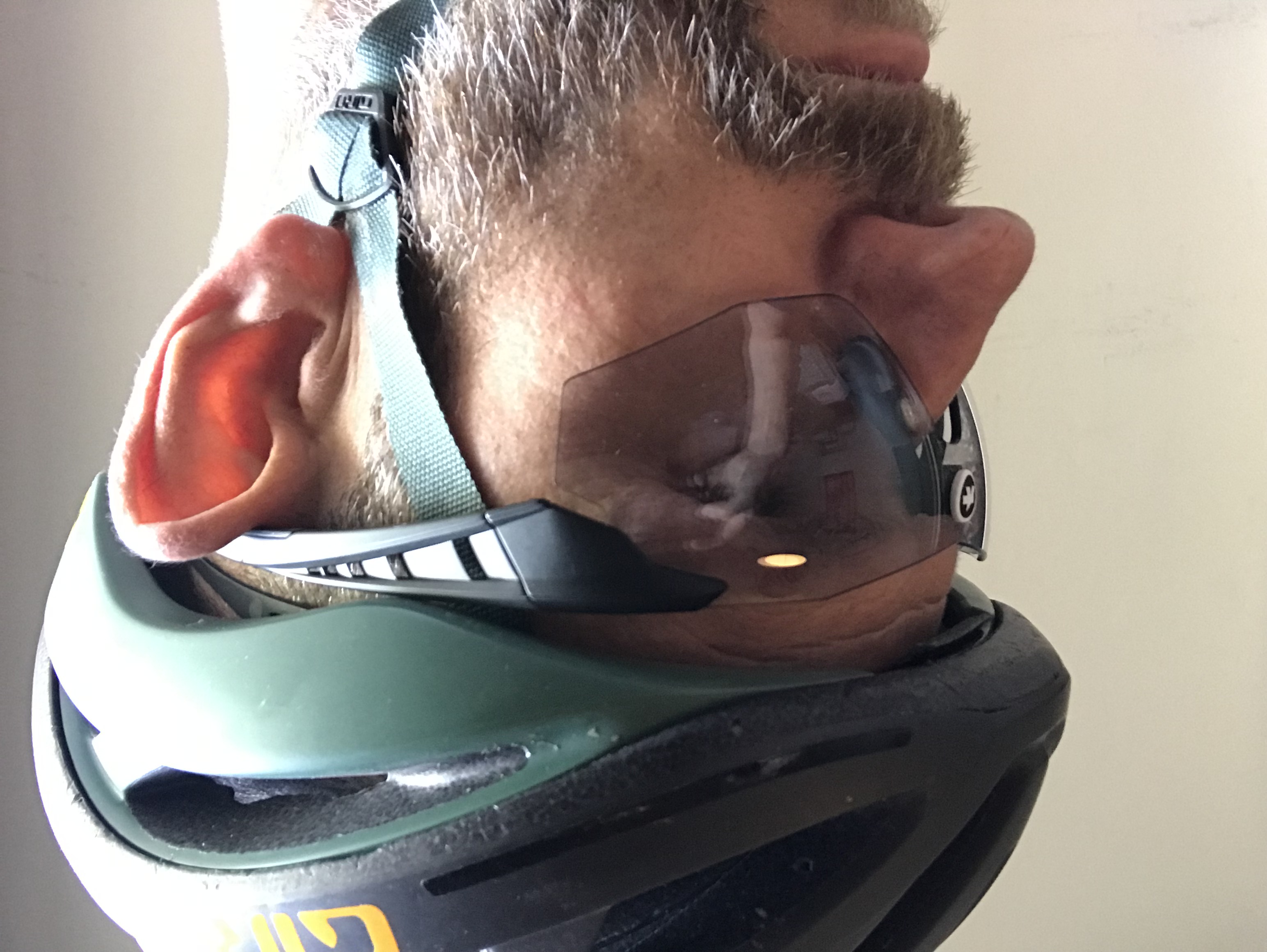
Looking at the tops of Oakley glasses such as the Kato, Sutro, Jawbreaker and Radar EV Path for example, all curve upwards rather than downwards, with the arms junctions dropped a little lower to clear the helmet.
Meanwhile the signature 100% shape features a central section that steps up to fill the gap to the top of the helmet whereas the arms are placed slightly lower.
Of course if you don’t wear a helmet or want to wear the Assos Skharab glasses for other sports or leisure activities none of this will be an issue - though Assos does say they are specifically engineered for the demands of racing, in which helmets are usually compulsory.
The fit is comfortable and as long as there are no helmet integration issues, I found the Skharab stayed perfectly in place.
There’s a small strip of grippy rubber (Oakley calls theirs Unobtainium) above the ears that’s there to help them stick, but it’s actually the gentle springiness of the lens and arms that holds them in a nice, pressure-free grip (called zeroPressure) that didn’t get uncomfortable over a four-hour ride.
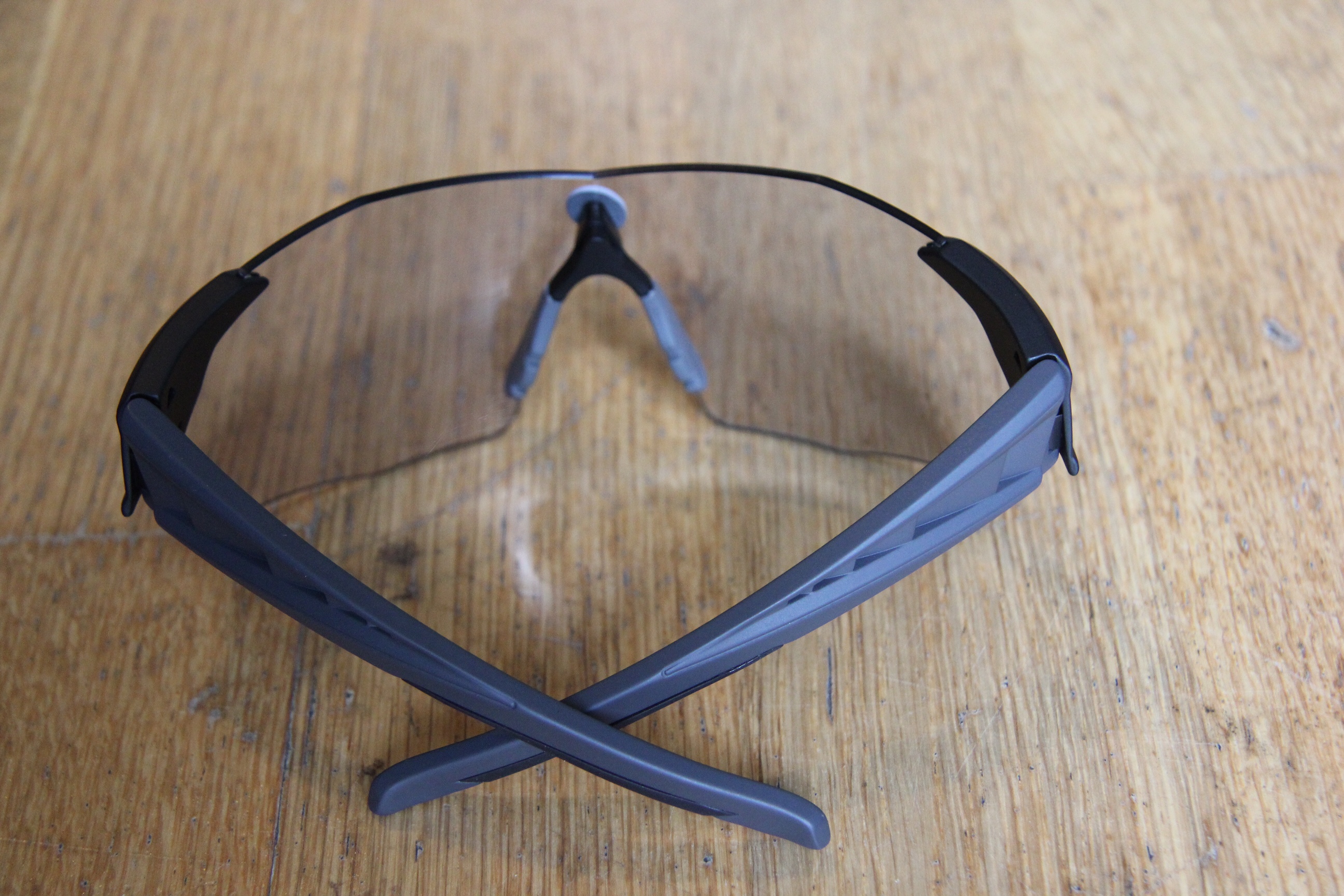
I did notice that whenever I furrowed my brow - which is quite often if I’m riding with the fast group on my club run - the pointed top of the nose piece, which serves as the back of the Assos badge, tended to dig in slightly. This could easily be to down to the shape of my particular brow.
As for the lens, I’ve been impressed. I tested the grey photochromic version, which I found to be incredibly versatile both in overcast conditions and bright sunlight - great for all year round, although Assos says 'low to medium light' for them.
Assos lists the Skharab's light transmission range as 77-17% and I found clarity was excellent at both ends and light adaptation was reasonably fast.
The grey lens doesn't increase contrast so it's not necessarily easier to pick out potholes in low light, whereas the Neptune Blue lens and the National Red version, for medium and bright light respectively, according to Assos, do increase contrast.
The rimless design means that even though it’s possible to see the top of the lens in the middle when you have your head down, it doesn’t obscure vision.
Value and conclusion
The Assos Skharab at £200 or £215 for the photochromic version is in line with the big eyewear brands’ cycling glasses. The new Oakley Kato is £241 while the Radar EV Path costs £207 - and neither of those have a photochromic lens.
The majority of 100% glasses are slightly lower priced, costing under £200 with the 100% Speedcraft photochromic just £1 under that figure.
See more cycling sunglasses in our buyer's guide.
The Skharabs are made in Italy, have a two-year warranty and are covered by Assos’s crash policy. They are unquestionably high quality and well made, but the design doesn’t quite seem to be in tune with what cyclists require from a pair of glasses - at least if they’re wearing a helmet at the same time.
| Assos Skharab sunglasses | Header Cell - Column 1 | Header Cell - Column 2 |
|---|---|---|
| Price at time of review | £200 or £215 photochromic lens | Row 0 - Cell 2 |
| Weight | 30g | Row 1 - Cell 2 |
| Lens options | Pluto Grey (photochromic), National Red, Neptune Blue | Row 2 - Cell 2 |
| Contact | www.assos.com | Row 3 - Cell 2 |
Simon Smythe is a hugely experienced cycling tech writer, who has been writing for Cycling Weekly since 2003. Until recently he was our senior tech writer. In his cycling career Simon has mostly focused on time trialling with a national medal, a few open wins and his club's 30-mile record in his palmares. These days he spends most of his time testing road bikes, or on a tandem doing the school run with his younger son.
